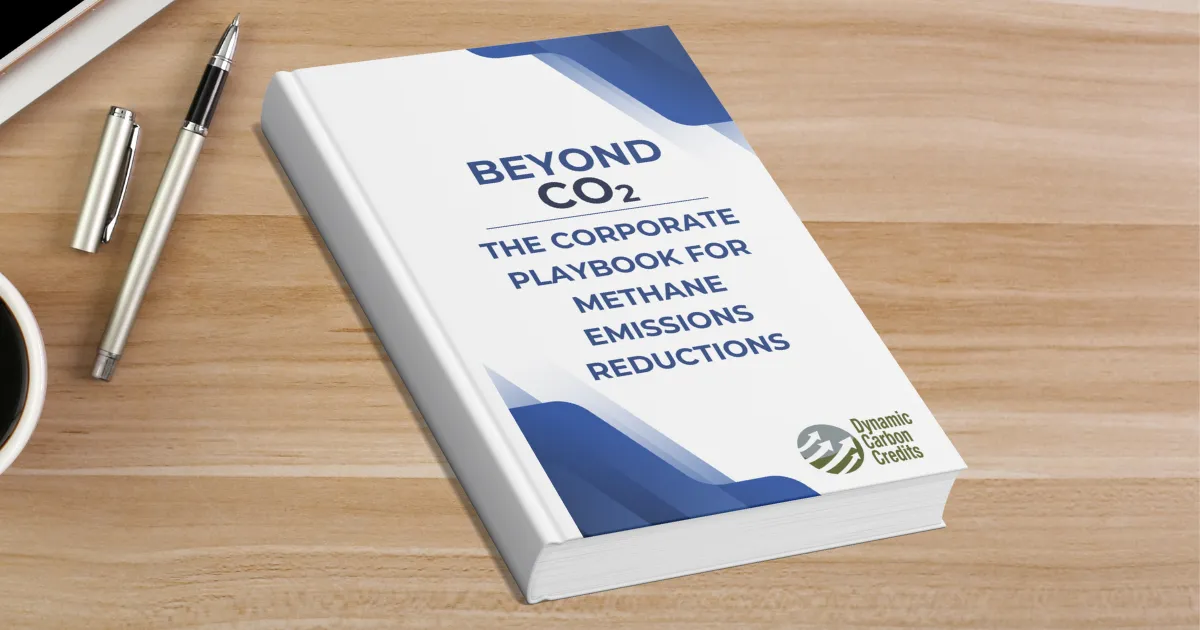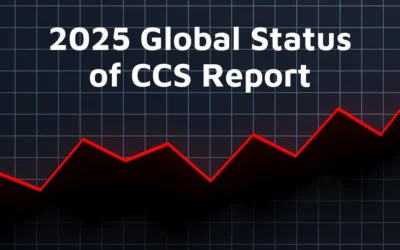The Problem: CH4 (Methane) is over 80 times more potent than CO2 in the short term and is a major driver of global warming. Corporations face growing pressure to address their methane footprint, which is often hidden in agricultural supply chains (Scope 3).
The Solution: Regenerative agriculture transforms farms from a methane source into a climate solution by rebuilding soil health. This approach reduces emissions and sequesters carbon.
Key Technology: Biochar, a stable form of carbon added to soil, offers a powerful, permanent way to lock away carbon while simultaneously improving soil structure to suppress methane production.
The Call to Action: Corporations must move beyond a CO2 – only focus. Investing in high-integrity, additional carbon credits from regenerative agriculture and biochar is a credible and impactful strategy for true climate leadership and effective methane emissions reduction.
Anna Jacobs
Why You Should Care About Carbon Capture
Every action we take—every mile we drive, every meal we eat—leaves a mark on the planet. For the average American, that mark adds up to 16 tons of CO2 emissions per year, one of the highest per capita rates in the world. But what if there were a way to not only offset your personal carbon footprint but also support farmers, regenerate soil, and create local jobs?
At Dynamic Carbon Credits, we believe carbon capture can be more than just a tool for fighting climate change – it can be a force for good. By turning the fight against emissions into an opportunity to heal the planet and empower communities, we’re redefining what it means to take responsibility for your impact.
Methane is the super-villain of greenhouse gases. Over a 20-year period, it is more than 80 times as powerful at trapping heat in the atmosphere as carbon dioxide. While it breaks down faster, its short-term impact is a sledgehammer blow to our climate system. According to the International Energy Agency, methane is responsible for around 30% of the global temperature rise since the Industrial Revolution.
For the C-suite and sustainability leaders at Fortune 500 companies, this presents both a critical risk and a profound opportunity. The risk lies in the increasing scrutiny from investors, regulators, and consumers on corporate value chains—particularly those touching agriculture, energy, and waste, the three primary sources of anthropogenic methane. The opportunity? Methane’s short lifespan means that decisive action to cut emissions now can deliver a rapid and noticeable cooling effect, buying us precious time while we work on the longer-term challenge of decarbonizing our economy. This is the low-hanging fruit of climate action, and it’s ripe for the picking.
The Methane Blind Spot in Corporate Strategy
Why has methane been a blind spot? Part of the reason is complexity. While CO2 emissions are often tied to smokestacks and tailpipes—visible, measurable sources—methane is more diffuse. It’s the fugitive emissions from natural gas pipelines, the belch of a cow, and the anaerobic decomposition in a landfill or rice paddy. For a global corporation, these emissions are deeply embedded in Scope 1 (direct operations) and, more significantly, Scope 3 (the value chain).
The pressure is mounting. The Global Methane Pledge, signed by over 150 countries, aims to cut methane emissions by 30% by 2030. This international commitment is rapidly translating into national regulations and heightened investor expectations. Companies that cannot demonstrate a clear strategy for methane emissions reduction will face increasing financial and reputational headwinds.
The question is no longer if you should act on methane, but how. How do you tackle a problem that spans from the farm fields in your supply chain to the waste management of your products? The answer lies not in a single silver bullet, but in a portfolio of innovative, high-integrity solutions—chief among them, regenerative agriculture.
From a Problem Source to a Climate Solution: The Power of the Soil
Agriculture is often painted as a primary culprit in methane production, and not without reason. Livestock and conventional farming practices are significant sources. But this narrative is incomplete. With the right approach, agricultural landscapes can be transformed from a carbon source into a massive carbon sink, actively healing the climate while reducing methane emissions.
This is the Promise of Regenerative Agriculture
Unlike industrial farming, which can degrade soil and release greenhouse gases, regenerative practices focus on rebuilding soil health. Techniques like no-till farming, planting cover crops, and managed grazing create a virtuous cycle. Healthier soil, rich in organic matter, supports a thriving microbiome that can actually consume methane from the atmosphere. Furthermore, improved soil structure enhances water retention and reduces the need for synthetic fertilizers, the production of which is a major source of nitrous oxide, another potent greenhouse gas.
For corporations, investing in the transition to regenerative agriculture within their supply chains is one of the most powerful levers for climate action available today. It’s a direct investment in reducing Scope 3 emissions, enhancing supply chain resilience, and building a powerful brand story rooted in tangible, positive impact.
Biochar: The Ancient Innovation Supercharging Methane Reduction
Within the regenerative agriculture toolkit, one solution stands out for its unique, dual-impact potential: biochar.
Biochar is a stable, carbon-rich form of charcoal created by heating biomass (like agricultural waste) in a low-oxygen environment—a process called pyrolysis. When this material is added to soil, it acts like a permanent carbon sponge, locking away carbon that would have otherwise been released into the atmosphere for hundreds, if not thousands, of years.
But its benefits go far beyond simple carbon sequestration. Biochar dramatically improves soil structure and aeration. This is critical for methane reduction. In compacted, waterlogged soils, anaerobic microbes produce methane. By improving drainage and creating a healthier soil environment, biochar helps suppress these methane-producing microbes and encourages the growth of methane-consuming ones. It’s a direct intervention that tackles both CO2 and CH4.
At Dynamic Carbon Credits, we see this as a cornerstone of a credible corporate climate portfolio. Supporting biochar production and application creates high-integrity carbon removal credits that are verifiable, permanent, and—crucially—additional. These are not phantom reductions; they are real, measurable changes to the carbon cycle, driven by corporate investment.
“Our vision is to re-engineer the fundamentals of our agricultural systems,” says Beau Parmenter, a key visionary at Dynamic Carbon Credits. “We’re not just offsetting emissions; we’re building a future where our food systems are a core part of the climate solution. By empowering corporations to invest directly in farmers adopting these practices, we create a powerful economic engine for ecological restoration.”
The Integrity Imperative: Choosing Credits That Count
As the urgency around methane grows, so does the risk of greenwashing. The voluntary carbon market is flooded with low-quality credits that do little to advance real climate action. For a Fortune 500 company, investing in the wrong kind of offset can do more harm than good, eroding trust and inviting accusations of climate insincerity. This is why the principles of additionality, permanence, and transparency are non-negotiable.
A credible methane reduction project must be additional—meaning it would not have happened without the financing from the carbon credit. It must be permanent, ensuring the climate benefit isn’t reversed. And it must be transparently monitored and verified by third parties. Anything less risks falling into the trap of what the OECD calls “misleading environmental claims.”
This is where solutions like regenerative agriculture and biochar shine. They represent a fundamental shift in practice, directly enabled by carbon finance, with lasting benefits locked into the soil. They are the bedrock of a high-integrity approach to tackling both methane and carbon dioxide.
Your Corporate Methane Playbook
The path forward is clear. It’s time to move methane from the footnotes of your sustainability report to a headline initiative.
- Measure and Understand: Begin with a thorough assessment of your company’s methane footprint across all scopes. Identify the hotspots in your operations and value chain.
- Prioritize Agriculture: Look to your agricultural supply chain not as a liability, but as your greatest opportunity for impact. Engage with suppliers and partners to explore a transition to regenerative practices.
- Invest in High-Integrity Solutions: Build a portfolio of carbon credits that prioritize real-world impact. Focus on proven, verifiable solutions like biochar and regenerative agriculture that offer co-benefits for communities and ecosystems.
- Tell Your Story: Communicate your methane strategy with confidence. A proactive, transparent approach to tackling this potent gas is a hallmark of true climate leadership and will resonate powerfully with investors, employees, and customers.
Methane’s moment has arrived. By embracing a sophisticated strategy focused on high-impact solutions, corporate leaders can not only mitigate a critical climate risk but can also spearhead a movement that revitalizes our soils, strengthens our food systems, and delivers rapid, measurable progress toward a stable climate.
Ready to build your corporate methane reduction strategy? Connect with our team of experts to explore a portfolio of high-integrity agricultural and biochar carbon credits tailored to your sustainability goals.






